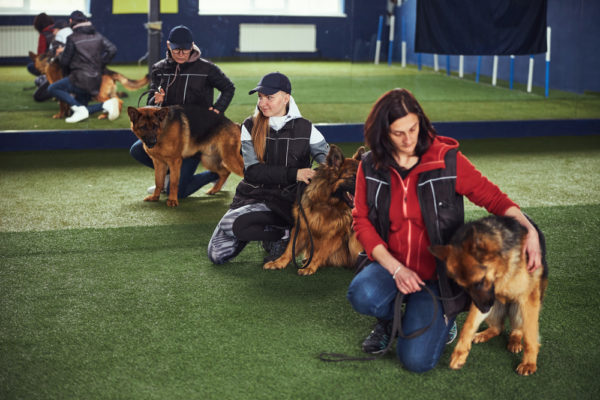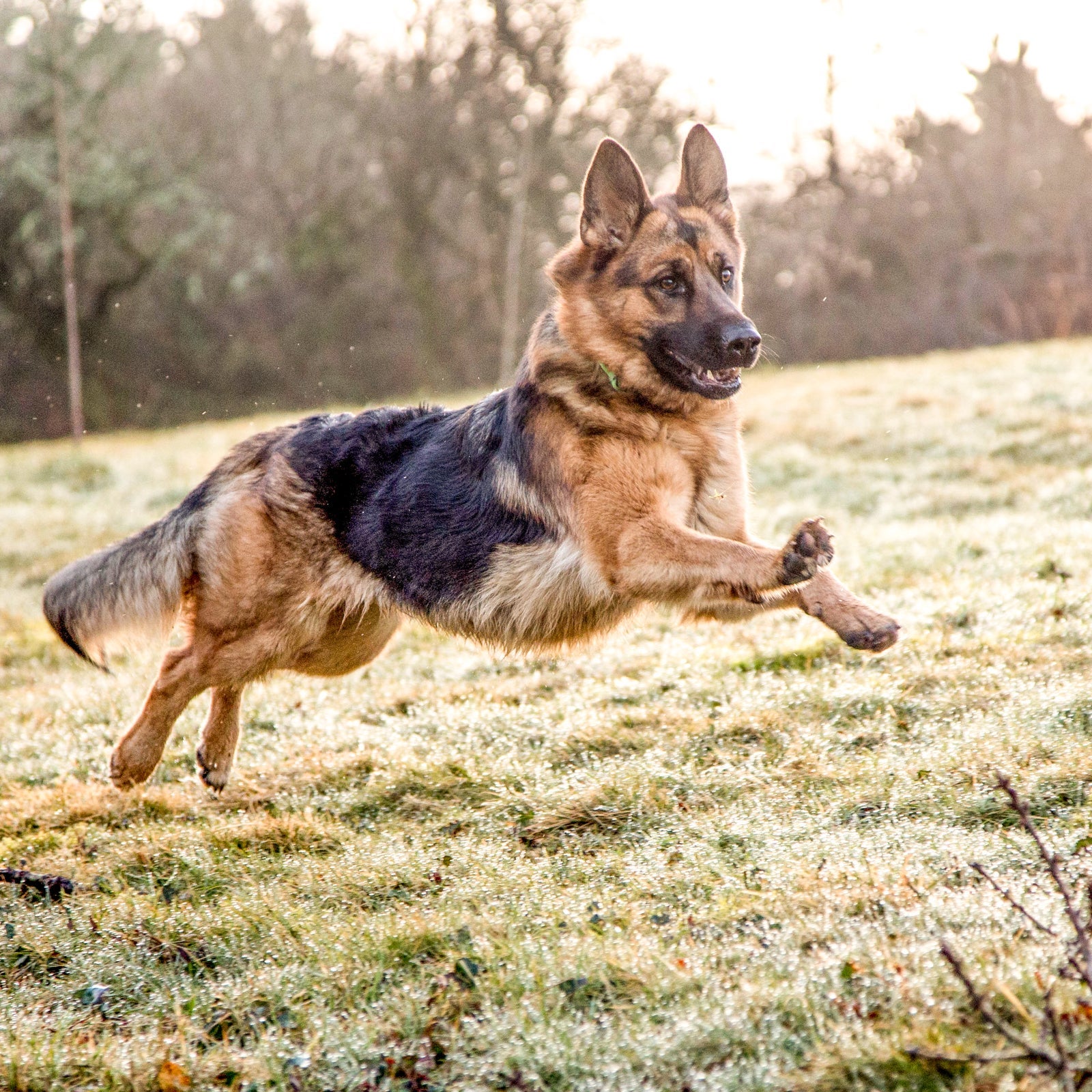Simple Dog Training Techniques for a Well-Behaved Pet
Simple Dog Training Techniques for a Well-Behaved Pet
Blog Article
The Ultimate Guide to Dog Training: Change Your Family pet's Habits
Effective pet training is crucial for promoting an unified relationship between family pets and their proprietors. This guide not only aims to equip you with the needed tools to transform your dog's actions yet also invites you to explore how these fundamental concepts can lead to a much deeper link with your pet dog.
Comprehending Pet Dog Actions
Understanding pet dog habits is crucial for effective training and an unified relationship in between dogs and their owners. A pet dog's actions is influenced by a combination of genetics, environment, and experiences. Dog training. Acknowledging these factors enables owners to customize their training approaches to satisfy the specific demands of their animals
Canines connect largely via body language, articulations, and faces. A wagging tail can suggest exhilaration or happiness, while a put tail might signify fear or submission. Observing these cues enables owners to respond suitably, strengthening favorable habits and attending to adverse ones efficiently.
Additionally, understanding the social structure of pets can supply understandings into their actions. Canines are pack pets, and they flourish in an organized environment. Establishing clear boundaries and consistent guidelines can prevent confusion and advertise a sense of security.
In addition, identifying the natural impulses of canines, such as need to go after or dig, is important. These impulses can be redirected via suitable outlets, such as play or workout. By thoroughly recognizing these behavior elements, proprietors can promote a positive training experience, ultimately causing a obedient and well-adjusted canine friend.
Crucial Educating Methods
Effective pet training counts on a range of important methods that can significantly boost the discovering procedure for both the proprietor and the pet. One essential strategy is favorable support, which includes fulfilling preferable behaviors with treats, praise, or playtime. This approach urges pet dogs to duplicate the actions that cause positive end results, cultivating a trusting relationship in between the animal and proprietor.
One more secret technique is uniformity in commands and expectations. Utilizing the exact same spoken cues and hand signals aids the pet dog comprehend what is called for, decreasing complication and advertising quicker learning. In addition, establishing clear boundaries and guidelines is crucial for effective interaction.
Socializing is likewise an essential component of training. Revealing pets to different settings, individuals, and various other animals aids them create appropriate social abilities and minimizes anxiousness in unfamiliar situations.
Lastly, patience and timing are vital. Training sessions must be brief yet regular, guaranteeing that the pet dog stays engaged and responsive. By employing these vital techniques, owners can produce a favorable and structured training experience that advertises great behavior and reinforces the bond with their canine buddies.
Creating a Training Set Up
How can a well-structured training schedule improve a pet's learning experience? A training routine gives consistency, making sure that pet dogs get regular, focused direction. This predictability helps canines understand what is expected of them, enhancing their discovering and enabling much better retention of commands and behaviors.
When developing a training timetable, it is essential to take into consideration the pet's age, breed, and private character. Young young puppies might gain from shorter, much more constant sessions, while grown-up pets may grow with longer, much less constant training durations. Incorporating a range of tasks can also maintain the sessions involving, avoiding dullness and promoting enthusiasm for knowing.
Furthermore, organizing training sessions at certain times of the day can assist solidify a regimen. Coupling training with day-to-day strolls or play can produce a positive organization with discovering. It is additionally important to consist of time for support, such as deals with or appreciation, to compensate wanted behaviors immediately.
Last but not least, adaptability is key. While uniformity is important, being adaptable to the pet dog's state of mind or power level can improve their discovering experience. A well-crafted training schedule ultimately lays the structure for effective communication and a stronger bond in between the pet dog and owner.
Usual Training Obstacles
In spite of having a well-structured training schedule, pet dog proprietors typically encounter different difficulties throughout the training procedure. Homepage One usual problem is incongruity in commands and signs. When several member of the family use various terms or tones, a pet may become overwhelmed, preventing its capacity to find out properly.
An additional regular difficulty is distraction. Dog training. Canines are normally curious creatures, and outside stimulations such as other animals, noises, or individuals can divert their interest throughout training sessions. This requires owners to create a regulated setting or progressively introduce interruptions to reinforce focus
Additionally, differing power degrees can affect training outcomes. High-energy dogs may battle to calm down and focus, while a lot more easygoing breeds might require additional inspiration to engage. Tailoring the training technique to fit the private pet dog's temperament is vital for success.

Structure a Strong Bond
A solid bond in between a pet dog and its proprietor is essential for effective training and overall health. Dog training. This connection cultivates count on, which is crucial for efficient communication throughout the training procedure. When a dog really feels secure and connected to its owner, it is more probable to react favorably to hints and commands
To develop this bond, consistency is crucial. Developing a regimen that consists of routine feeding, exercise, and training sessions aids develop a feeling of stability. Additionally, favorable reinforcement techniques, such as treats, praise, and play, enhance desired actions while strengthening the psychological connection.
Socializing is an additional crucial aspect of bond-building. Revealing your pet dog to different atmospheres, people, and other pets aids them feel more certain and comfy, improving the bond with their owner. Participating in activities together, such as strolling, playing bring, or taking part in obedience training, advertises synergy and mutual enjoyment.
Final Thought

Understanding dog habits is necessary for efficient training and an unified partnership in between canines and their proprietors.Reliable pet training counts on a selection of essential strategies that can considerably improve the understanding procedure for both the proprietor and the pet dog.Regardless of having a well-structured training timetable, dog proprietors typically run into various difficulties during this contact form the training procedure.In conclusion, efficient canine training counts on a detailed understanding of canine behavior, the application of necessary strategies, and the establishment of an organized training schedule. By stressing favorable support and uniformity, pet owners can considerably enhance their pet dogs' habits, inevitably ensuring a harmonious connection and promoting the health of both the pet and its atmosphere.
Report this page